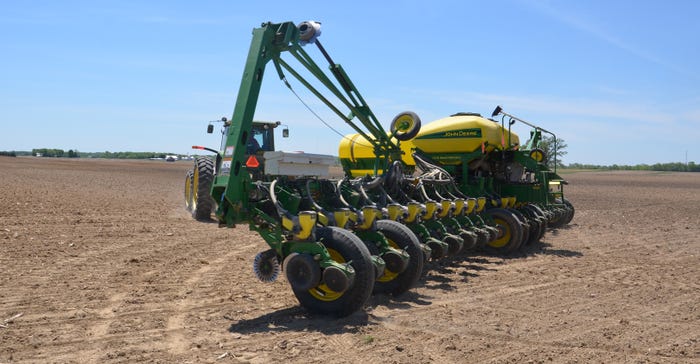
Planting season will get here, sooner or later. If it’s later, it’s even more important that you are ready to roll. Have you done all you can to make sure your planter and other equipment needed to keep the planter rolling are ready to go?
Pete Illingworth is responsible for preparing the planter at the Purdue Throckmorton Ag Research Center near Romney, Ind. He usually gets it ready in March. By this time in the year, he’s down to “checking the list twice.”
Here are 10 things to have on your checklist to make sure you’re ready to roll when the weather and soil are ready.
1. Make sure the planter frame is level. Illingworth uses a level to ensure the planter hitch is adjusted so the frame runs level with the ground.
2. Prepare a proper seedbed. Know what it will take to achieve a proper seedbed well in advance. If you’re no-tilling, review adjustments you may need to make to get seed under the surface. If you use minimum or conventional tillage, are your tillage tools ready ahead of time and set properly?
3. Monitor wear of coulters and disk opener blades. If you decided there was not enough wear to justify replacing these pieces before the season started, keep a close eye on them during the season. Make sure they continue functioning properly.
4. Know how to adjust depth properly in the field. What are the settings for the various seeding depths you might use? Illingworth keeps the planter manual nearby so he knows where to set the handle that controls seed depth.
5. Keep a tape measure handy. Stop long enough to check behind each row unit and make sure seed is placed at the depth you want to achieve.
6. Check and save seed tags and other information. Seed tags are attached to seed bags for a reason. Take note of the traits, especially when you’re planting more than one hybrid or variety. Know which herbicides can be applied on which hybrids or varieties.
7. Compare closing wheel performance. If you take time to equip one or more rows with a different style of closing wheel to check performance versus what you normally use, then take time to make a thorough comparison. Make both mental and written notes.
8. Make sure downforce units work properly. Hopefully preseason checks included testing the down-pressure system and examining it for wear. Once you begin planting, take time to ensure the system is working properly.
9. Monitor starter fertilizer performance. Is the system working properly? If you have a monitoring system on the starter fertilizer delivery unit, be sure to check it occasionally.
10. Prepare measuring equipment such as scales. You may use scales to weigh seed coming out of a tender. Or maybe you weigh starter fertilizer. Make sure these devices are calibrated before the season begins.
Check out the slideshow for visuals of these points.
About the Author(s)
You May Also Like




